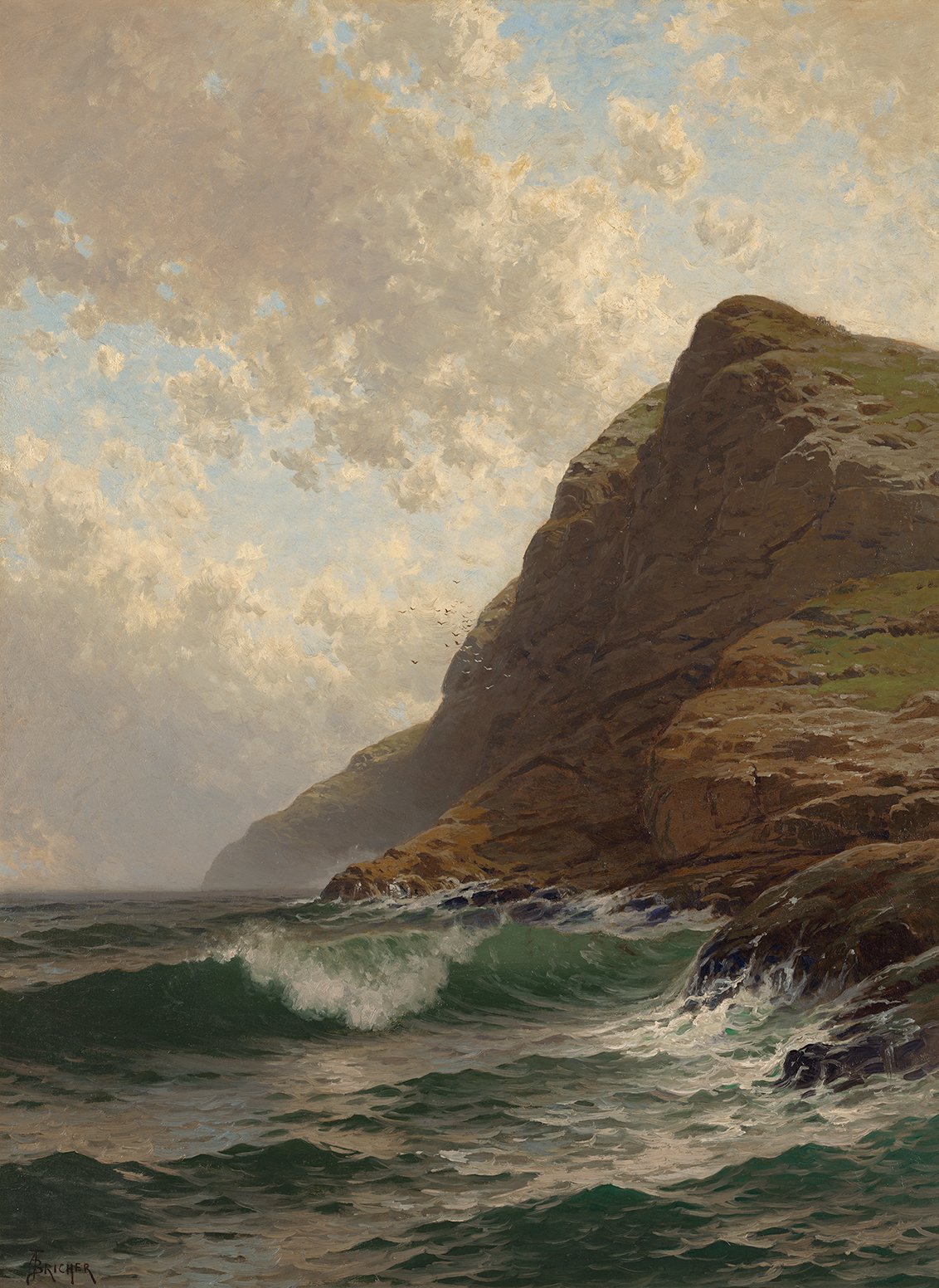Artist Bio
Born in New Hampshire, Alfred Thompson Bricher grew up outside Boston and studied painting at the Lowell Institute, as well as with marine artists Charles Temple Dix and William Stanley Haseltine during their summer sketching trips to New England. Bricher opened a studio in Boston in 1858. Influenced by Hudson River School artists, Bricher earned a reputation for autumnal landscapes. He painted scenes for reproduction as chromolithographs in illustrated magazines such as Harper’s Monthly. In 1868, Bricher moved to New York City. That year, he exhibited his work for the first time at the National Academy of Design; he would continue to exhibit there until his death in 1908.
Bricher made many summer trips to the coast, exploring from the New Jersey Shore up into northern Maine. During his lifetime, Bricher exhibited at the Brooklyn Art Association, the Pennsylvania Academy of Fine Art, and the Art Institute of Chicago. His canvases focused on the relationship between land, water, and light.
Go on an adventure, anytime!
With a membership you can be a part of the Haggin Museum all year long. Starting as low as $35 per year.

